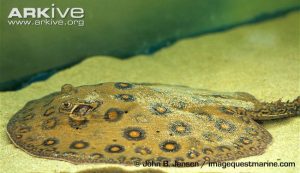 Welcome to Dear Shark Man, an advice column inspired by a ridiculous e-mail I received. You can send your questions to me via twitter (@WhySharksMatter) or e-mail (WhySharksMatter at gmail).
Welcome to Dear Shark Man, an advice column inspired by a ridiculous e-mail I received. You can send your questions to me via twitter (@WhySharksMatter) or e-mail (WhySharksMatter at gmail).
Dear Shark Man,
What are your thoughts on elasmobranchs in the pet and aquarium trade? Is this a serious conservation issue?
Sincerely,
Nonchalant in New Zealand
Dear Nonchalant,
Generally speaking, this is not a significant conservation issue, which doesn’t mean that it isn’t a problem for other reasons. Believe it or not, readers, some people get sharks and rays as pets, including some people who really don’t have appropriate facilities to house them. As a conservation issue, this pales in comparison to overfishing. In fact, out of all the species of sharks and rays evaluated as Endangered or Critically Endangered by the IUCN Red list, only one lists the ornamental fish trade as a major threat: Potamotrygon tigrina, one of the colorful species of river stingrays found in the Amazon. Incidentally, the Potamotrygon river stingrays have been proposed for CITES listing multiple times, but have yet to receive it.

Public aquariums are largely a different issue than the home ornamental fish trade. I should note here that I am a huge supporter of aquariums as public education tools, and of sharks in captivity which can serve as ambassadors. I’ve worked in two aquariums, and we had our wedding rehearsal dinner at one of them. Since Blackfish came out, I’ve noticed a huge uptick in people demanding an end to sharks in captivity, which, to put it mildly, is not something that I believe needs to happen.
There are some threatened species that are commonly displayed in public aquariums. Zebra sharks, for example, are IUCN Red List Endangered, and sand tiger sharks are Critically Endangered off Eastern Australia (Vulnerable worldwide). Since relatively few of them were taken from the wild, this is not currently a significant conservation issue, though I’d personally argue that any educational institution displaying threatened species has a duty to educate visitors about related conservation issues. Most zoos and aquariums associated with the AZA do a very good job of this. In fact, AZA has even started a SAFE (Saving Animals From Extinction) program for sharks and rays.
Finally, it’s important to talk here about the difference between population or species conservation and animal welfare. Some shark species don’t do particularly well in captivity (though many species do). Even for species that tend to do well in captivity, I’ve seen some tanks that made me uncomfortable or even sad (all in non-AZA facilities). However, while I hate to see any animal suffer needlessly, a few individual animals having unpleasant lives is not something that I personally prioritize as highly as, say, an entire species in serious risk of extinction.
So, in summary, other than for one species of river stingray, the ornamental fish trade is not currently a significant conservation issue for any endangered sharks and rays. Indeed, I believe that having sharks in captivity in responsible, well-run public aquariums is great for public education about science and conservation. However, that does not mean that people (or public aquariums) without the appropriate facilities should attempt to house sharks, or that there are no other issues associated with the ornamental fish trade.
If you appreciate my shark research and conservation outreach, please consider supporting me on Patreon! Any amount is appreciated, and supporters get exclusive rewards!